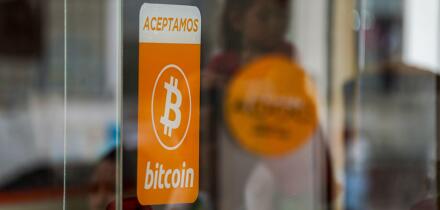
Yuan Non-Deliverable Options
Besides non-deliverable forwards, the other most popular product in China is the CNY non-deliverable option (NDO). The NDOs, in the same way as options in most other markets, can help participants hedge their underlying positions as well as NDFs. Historical volatility of the yuan/dollar currency pair is extremely low. Figure 3 depicts the annualized historical volatilities (standard deviation of natural log-returns of the daily CNY/USD rates multiplied by square root of 260) of the yuan/dollar from January 2001 to March this year. The annualized volatility of the pair is low compared with volatilities on most currencies. The average annualized volatilities were 0.036% and 0.032% in 2002 and 2003, respectively.
Figure 4 depicts the implied volatilities of three month, six month and 12 month CNY options from June 2002 to April this year. We can readily see that implied volatilities have been much greater than their corresponding historical volatilities shown in Figure 3.
Yuan NDFs & NDOs

There are no readily available turnover data for either yuan NDFs or NDOs so we can not obtain the strength of yuan revaluation pressure from either the NDF rate or NDO implied volatilities. Yet, the analysis of the NDF and implied volatilities of the NDOs together give us a better indication of the yuan revaluation pressure. Figure 5 depicts the relationship of one-year NDF discounting pips and implied volatilities from the one-year NDOs.
The similar pattern of fluctuation of yuan NDF discounts and implied volatilities shown in Figure 5 indicates the same economic and political factors influence both markets. But, despite the close movements between the two markets, there are significant differences between the two shown in Figure 5. Such differences can be explained by the two markets reacting differently to the same market information.
In order to capture the difference between the two markets we find the moving correlation coefficients between them and depict the results in Figure 6. We find the correlation coefficient between the two was largely around zero before late 2002, showing no specific correlation; yet it jumped to above 90% from late 2002 and has remained above 50% on average ever since. The close-to-zero correlation coefficient late last year might be interpreted as the two markets moving differently or the yuan revaluation pressure not being as strong. Thus, the correlation coefficient shown in Figure 6 provides us with a good indication of the market pressure for revaluation.

The Potential Of Yuan Derivatives
Although the onshore yuan forward market has existed for over seven years, it has not played an important role in the Chinese foreign exchange market because total annual turnover of the yuan forward market was low compared to the Chinese trade volume. The limited development of the yuan forward market cannot even satisfy the need of domestic users, in addition foreign players cannot participate in this market easily.
The need to hedge currency related risk will increase as China further integrates itself into the world economy and financial market. Thus the existing offshore yuan derivatives market will not only continue to exist, but is also likely to grow further in years to come as it takes time for onshore products and markets to be developed in China.
This week's Learning Curve was written by Peter G. Zhang, chief financial engineering advisor and senior director of research and development at the Shanghai Futures Exchange.






